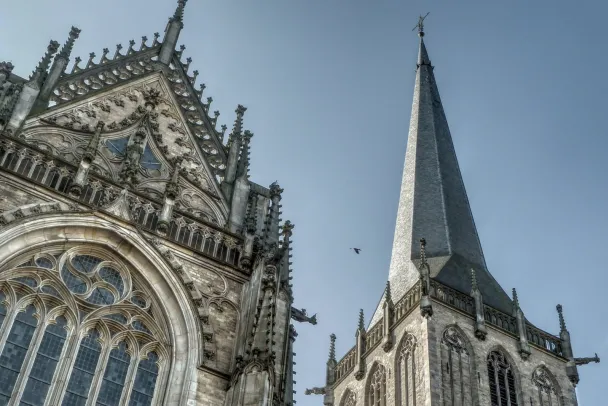Willibrordi Cathedral
The striking tower of Willibrordi Cathedral on the Geat Market Square in the heart of Wesel's old town is visible from afar.
History of the cathedral:
A small church already stood on this site before 800 AD. It was under the control of the Echternach monastery, where the eponymous Frisian missionary Willibrord (died 739) is buried. The imposing church in its current appearance was built between 1501 and 1540 as a late Gothic basilica with five naves. The tower was erected in 1477/78 and is considered an outstanding example of the late Gothic style in northern Germany. The magnificent interior with its original 38 altars made St Willibrordi one of the most important medieval church buildings on the Lower Rhine. However, it was lost after the town joined the Reformation in 1540.
From 1883 to 1896, the church was completely renovated with the help of the Prussian ruling dynasty. It was only then that the planned ambulatory was completed. The statues of the Great Elector and Emperor Kaiser Wilhelm I above the entrance portals are a reminder of this period.
The Allied bombing raids in 1945 also caused considerable damage to Willibrordi Cathedral.
The Willibrordi Cathedral today:
The reconstruction was started in 1947 by the "Dombauverein". It was carried out by the cathedral's own builders' lodge using the late medieval design. The reconstruction was completed in 1994 with the installation of the choir-rider, from which a carillon can be heard four times a day today.
Today, Willibrordi Cathedral is Wesel's central city church, where the Protestant community celebrates services. In addition, a variety of cultural events take place in the cathedral.
